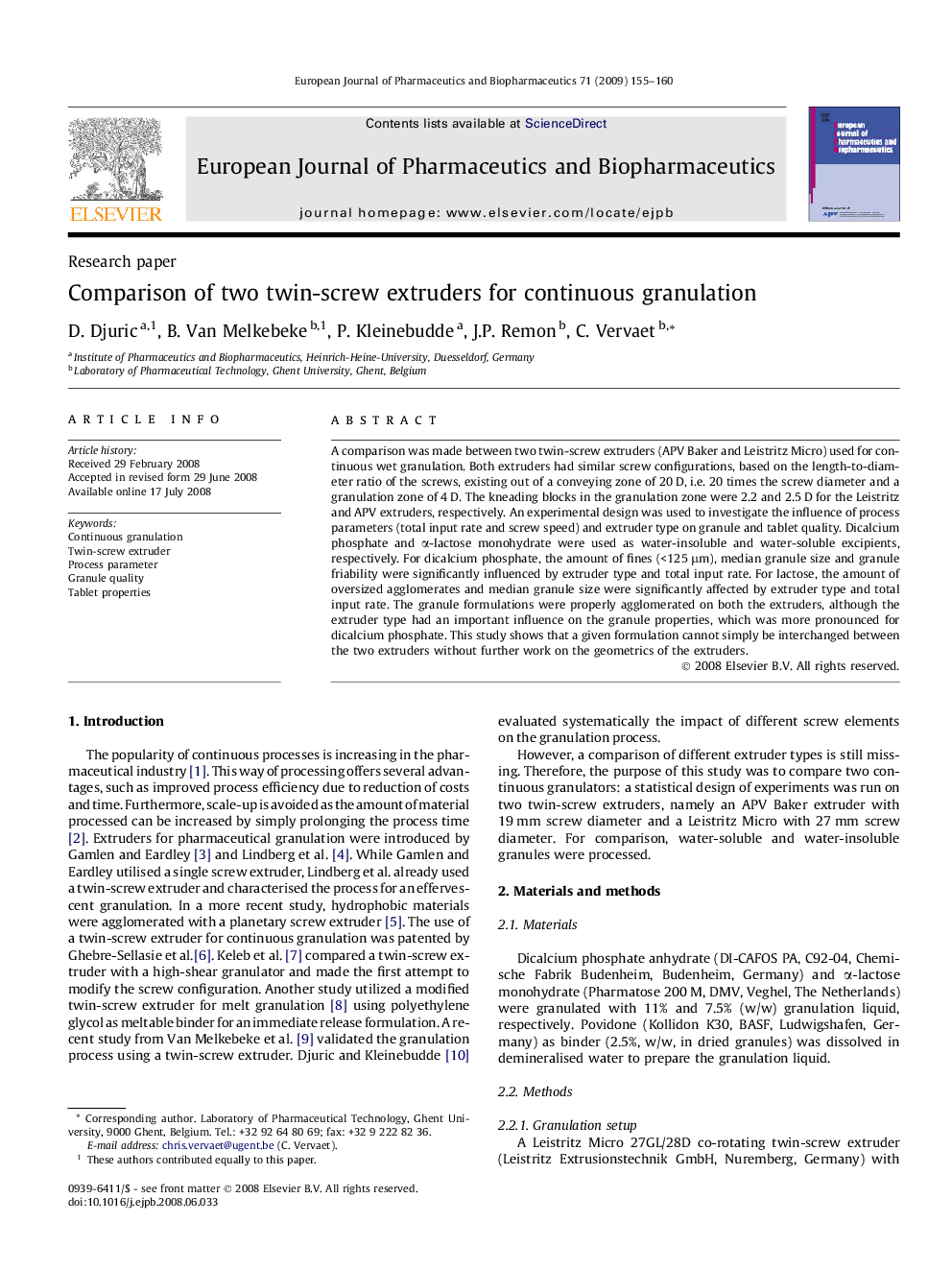| Article ID | Journal | Published Year | Pages | File Type |
|---|---|---|---|---|
| 2084518 | European Journal of Pharmaceutics and Biopharmaceutics | 2009 | 6 Pages |
A comparison was made between two twin-screw extruders (APV Baker and Leistritz Micro) used for continuous wet granulation. Both extruders had similar screw configurations, based on the length-to-diameter ratio of the screws, existing out of a conveying zone of 20 D, i.e. 20 times the screw diameter and a granulation zone of 4 D. The kneading blocks in the granulation zone were 2.2 and 2.5 D for the Leistritz and APV extruders, respectively. An experimental design was used to investigate the influence of process parameters (total input rate and screw speed) and extruder type on granule and tablet quality. Dicalcium phosphate and α-lactose monohydrate were used as water-insoluble and water-soluble excipients, respectively. For dicalcium phosphate, the amount of fines (<125 μm), median granule size and granule friability were significantly influenced by extruder type and total input rate. For lactose, the amount of oversized agglomerates and median granule size were significantly affected by extruder type and total input rate. The granule formulations were properly agglomerated on both the extruders, although the extruder type had an important influence on the granule properties, which was more pronounced for dicalcium phosphate. This study shows that a given formulation cannot simply be interchanged between the two extruders without further work on the geometrics of the extruders.
